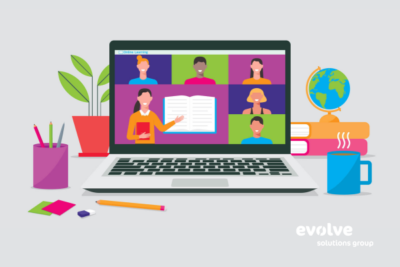 K-12 classroom educators are continuing to transition to Learning and Development (L&D) in both higher education and corporate roles this year. This interest in L&D is most likely due to a lack of support for K-12 educators throughout the country, a growing desire among educators to solve problems for organizations through training, and better wages. In this transition many educators have found that they have certain skills that can assist them, but most find that Instructional Design, specifically on the corporate level, is quite different and requires a new, specific set of skills.
K-12 classroom educators are continuing to transition to Learning and Development (L&D) in both higher education and corporate roles this year. This interest in L&D is most likely due to a lack of support for K-12 educators throughout the country, a growing desire among educators to solve problems for organizations through training, and better wages. In this transition many educators have found that they have certain skills that can assist them, but most find that Instructional Design, specifically on the corporate level, is quite different and requires a new, specific set of skills.
What skills do they already have?
Educators are familiar with educational theories at their core and understand concepts of intrinsic and extrinsic motivation, as well as other important principles of educational psychology. They also often have experience with classroom presentations, both in person and virtually, due to virtual classrooms during the COVID-19 pandemic. While classroom teachers specifically utilize pedagogy with a focus on delivering content and structure to a student, many teachers have “accidentally” embraced andragogy with their young students. This is the adult approach to learning with a focus on independence and an emphasis on “Why am I learning this?” and “How will I use this?”. They’ve acknowledged that this approach to education increases engagement and helps to create lifelong learning.
What skills are still needed?
Classroom teachers tend to be the Subject Matter Experts (SMEs) of the content that they are presenting. Educators-turned-Instructional Designers (IDs) often comment on how they had to learn how to work with SMEs to gather the necessary information. Asking the right questions, guiding the conversations, and knowing when to deem information “need to know” versus “nice to know” are skills in not only content management but also people management. Another challenge transitioning teachers face is that many times, K-12 teachers are presented with an already existing curriculum complete with benchmarks and, oftentimes, existing assessments. Building a curriculum from the ground up can be a challenge, even if it is a welcome one. Assessment and evaluation in Learning and Development is more than just checking that the knowledge can be recalled. It’s about determining if the training has positively affected the business and solved a specific problem or challenge. These are new approaches for K-12 teachers.
So, how do transitioning teachers gain these skills?
There are various ways, from a master’s degree in Instructional Design to various certification programs and even L&D “boot camps.” It’s important for transitioning K-12 teachers to be selective in their approach to their chosen program. Networking with other IDs and staying current within the industry can help them grow into confident and effective Instructional Designers.
At Evolve, we celebrate the various backgrounds of our team. From former classroom teachers who have transitioned to L&D and now have years of experience to IDs in the industry for multiple decades to team members with specific skills and interests. We all learn and grow by collaborating, sharing our experiences, and supporting each other. As life-long learners, we desire to help each other change, learn, grow, and evolve.
